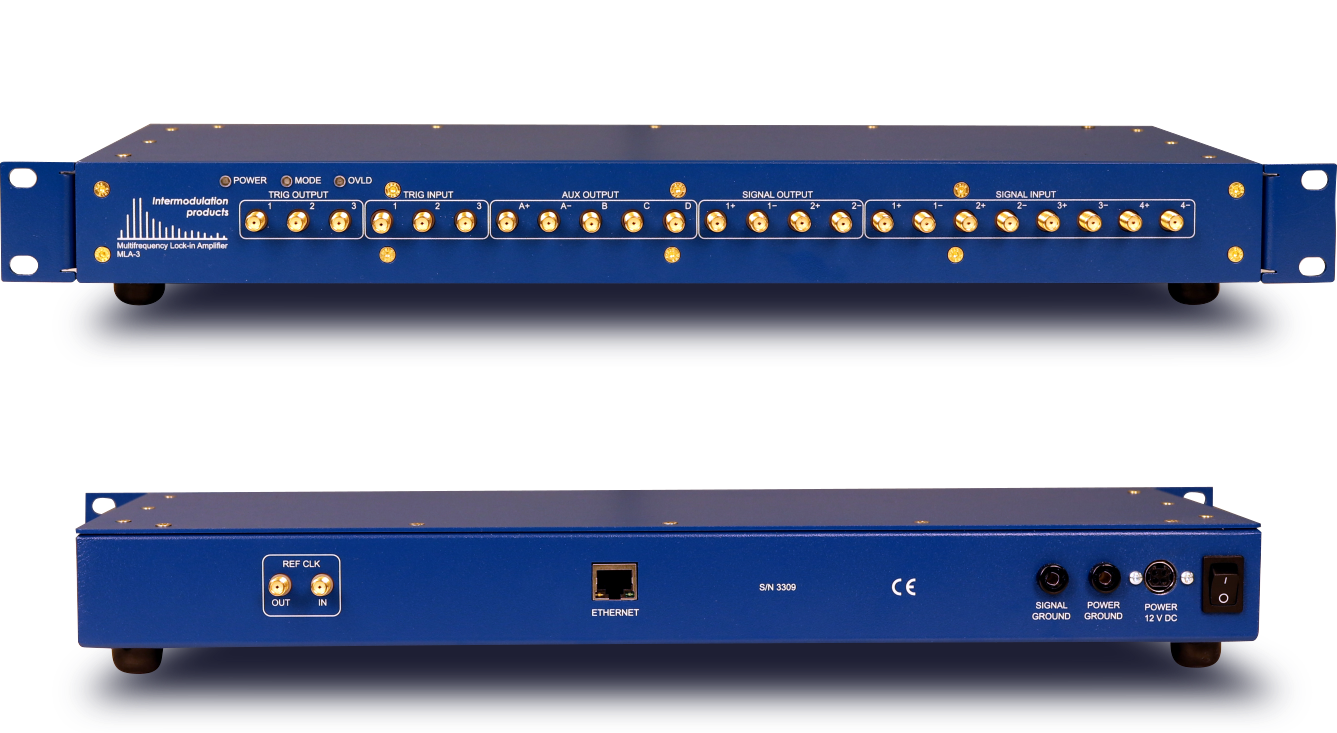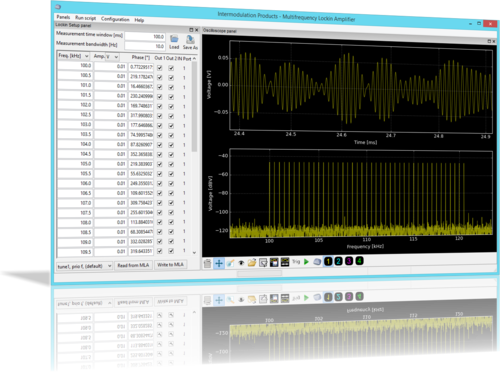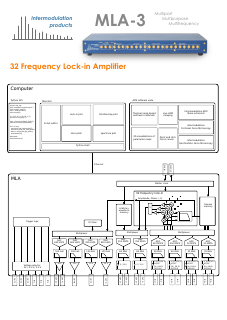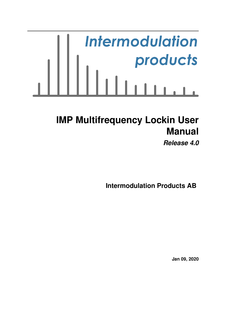- 80 MHz analog bandwidth
- 4 input and 2 output ports
- 32 generators and demodulators
- Powerful graphical software and Python API
- Multiple modes of operation:
- 32 frequency lock-in
- Coherent signal synthesis and sampling
- Oscilloscope
- Arb. waveform generator
- Atomic force microscopy (AFM)
- Nonlinear systems analysis
- Test and measurement
- Physics research
Excite and measure response amplitude and phase at 32 frequencies
Multiple parallell inputs and outputs, all fully differential
Perfect for both linear and nonlinear system analysis
Multifrequency measurement
A nonlinear system will generate response at harmonics (integer multiples of the drive frequencies) and intermodulation products (integer linear combinations of the drive frequencies). With appropriate choice of the drive frequencies we can generate many intermodulation products near a resonance, or in some frequency band where the response can be detected with good signal-to-noise ratio. By carefully tuning of the multiple drive frequencies, the MLA™ can lock in on response at intermodulation products, or mixing products of many drive tones.
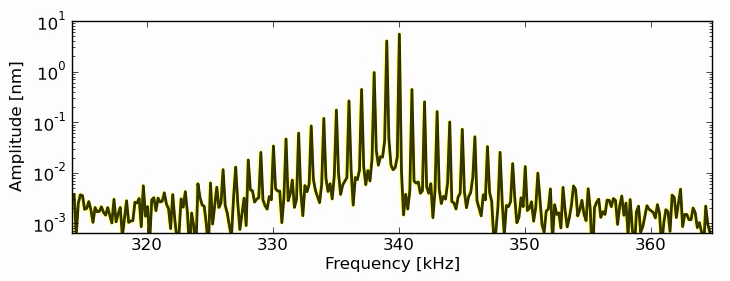
Flexible - to fit your experiment
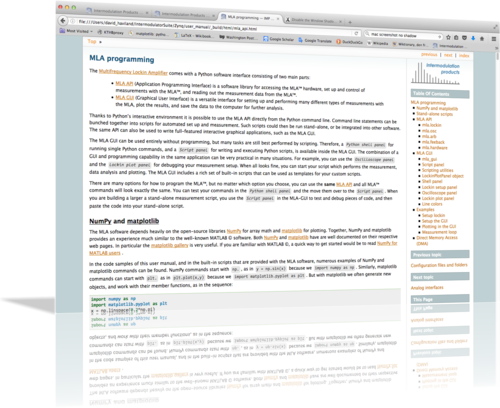
The graphical user interface (GUI) has a built in Python scripting panel so you can directly access the application programming interface (API), inside the GUI. The GUI is simple to use and suitable to many different kinds of measurements. With the well-writen user manual containing numerous example programs and complete documentation of the API, you can make your measurement software do amazing things!
Examples include:
- Measure transfer functions.
- Lockin on harmonics, intermodulation products.
- Rapidly monitor broad band response.
- Triggered and doubly triggered lockin-measurements.
- Arbitrary biasing with precision timing.
- Frequency domain multiplexing.
- Event counting during measurement.
- and many more.....
Not only multiple lockins in one box
The MLA™ is highly configurable digital measurement instrument with 4 input, 2 output, 4 analog-out and 6 trigger ports -- all synchronous to one very stable clock. When operated as a lockin, the MLA calculates in real time, the system response at 32 user-defined frequencies. It can also stream optimally down-sampled time-domian data directly to the computer. Because the drive waveform is carefully tuned to the sampling frequency, a Fast Fourier Transform reveals the entire response spectrum with no Fourier leakage in the spectrum. A versatile graphical user interface (GUI) has functionality for arbitrary waveform generator, oscilloscope, spectrum analyzer, network analyzer, frequency counter, and more.


